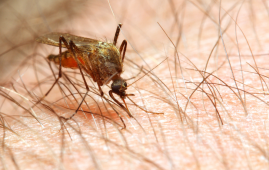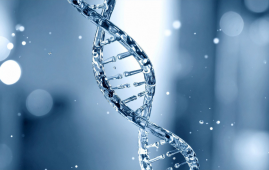

A recent study reviewing the advantages of alternative protein sources for health and the difficulties in producing them was published in npj Science of Food.
The requirement for substitute protein sources
It is still imperative to guarantee the sufficient and sustainable supply of nourishing food because by 2050, the world’s population is predicted to surpass 9.7 billion. Because conventional sources of protein, such as cattle, are insufficient and greatly increase greenhouse gas (GHG) emissions, the demand for protein is particularly worrying.
Increasing agricultural production to fulfill anticipated protein needs will unavoidably jeopardize biodiversity and hasten environmental deterioration. Because of this, a lot of money has been spent on making alternative protein (AP) products look and feel more like those manufactured from animal sources.
Currently, the AP market includes products made from cultured meat and seafood as well as protein sources derived from plants, insects, and microbes. The size of the AP market was projected to be $15.3 billion USD in 2023 and is projected to grow to $26.5 billion USD by 2030.
Regulatory constraints, high production costs, and market acceptance are just a few of the obstacles that APs face despite their potential to address environmental and health concerns. The AP sector needs to overcome these challenges in order to become a viable and widely recognized source of protein in the future, despite the growing interest and potential market.
advantages and effects on the environment
When compared to conventional animal products, APs have a substantial positive environmental impact. Not only do high-protein plants and microorganisms require less space and water, but they also emit substantially fewer greenhouse gases when grown and raised as insects.
In comparison to animals, plant-based protein production consumes 20–50 times less land and generates 40–100 times less greenhouse gases. In addition to using 102 times less area and producing 35 times less water than cattle farms, farming for insects like mealworms has been demonstrated to emit greenhouse gases up to 75 times less frequently. Compared to conventional protein sources, microbe-based protein sources can utilize up to 2,000 times less land, making them exceptionally efficient.
Despite these benefits, the environmental impact of cultured meat is yet unknown because of the technology’s early stages of development and significant energy and resource requirements. As such, ongoing evaluations and revisions are required to reduce the possible environmental impact of Alternative Protein.
Obstacles in the manufacturing of AP
Due to molecular and physical differences, the manufacturing of APs presents a number of obstacles, namely in emulating the taste, texture, and nutritional profiles of traditional proteins. Because of this, in order to obtain comparable textures, plant and insect proteins frequently need to be thoroughly processed.
Commonly used to create meat analogs, high-temperature extrusion is energy-intensive and may not accurately mimic the sensory experience of actual meat, leading to the perception of these goods being dry or fibrous. Furthermore, even if microbial proteins like mycoprotein might mimic goods derived from animals, they still need to be developed further in order to approximate these sensory attributes.
Large-scale manufacturing of cultured meat is not economically feasible with current methods. In addition, the bioreactors utilized in these procedures need certain settings in order to guard against contamination and guarantee a constant level of quality.
Taste and dietary composition
Because of their unique qualities that set them apart from animal goods, APs can be challenging to disguise. Examples of these flavors include the earthy undertones found in insect proteins and the bean-like taste of some plant proteins. While these products can include flavoring agents, customers frequently choose items with fewer ingredients.
Compared to animal proteins, amino acid profiles of APs are frequently varied, and they may even be deficient in important amino acids like lysine. Similar variations in nutritional value can be found in some APs, especially those originating from microbes or insects, depending on the species and methods of processing.
Many customers are still dubious about the health advantages of APs, especially since some of the items fall under the category of ultra-processed meals. For these products to be widely accepted, it is imperative that they are safe, nutrient-dense, and taste and texture-similar to regular proteins.
In conclusion
Because of their quick development and high protein content, algae, seaweed, and water plants are examples of future trends and prospects for APs. Another is diversifying protein sources.
Protein extraction can be enhanced by technologies such as high-pressure processing and supercritical fluid extraction. The use of fermentation and gene-editing technology is boosting the production of cultured meat and seafood.
However, issues like guaranteeing safety, lowering allergenicity, and comprehending how APs affect gut microbiomes in relation to health still need to be resolved. To support the AP industry’s continued expansion, it is also necessary to set clear rules to assure consumer safety, advance current analytical procedures, and improve the cost-efficiency of AP manufacturing.
For more information: Current challenges of alternative proteins as future foods, npj Science of Food, doi:10.1038/s41538-024-00291-w
more recommended stories
 Perinatal Mental Health Challenges Highlighted in New Study
Perinatal Mental Health Challenges Highlighted in New StudyMental Health Challenges in New Parents:.
 Walking Speed Before Hip Replacement Predicts Recovery
Walking Speed Before Hip Replacement Predicts RecoveryNew Evidence Points to a Simple,.
 How Soybean Oil Impacts Weight Gain and Metabolism
How Soybean Oil Impacts Weight Gain and MetabolismWhy Soybean Oil May Affect Metabolism.
 New Malaria Prevention Insights From African Biostatistics
New Malaria Prevention Insights From African BiostatisticsHow New Data Is Reframing Malaria.
 World Summit Outlines Core Principles for Healthy Longevity
World Summit Outlines Core Principles for Healthy LongevityWhy Healthy Longevity Demands a New.
 Gut Immune Cells and Long-Lasting Antiviral Protection.
Gut Immune Cells and Long-Lasting Antiviral Protection.Breakthrough Findings on How Gut Immune.
 Mild Pancreatic Duct Dilatation Signals Higher Cancer Risk
Mild Pancreatic Duct Dilatation Signals Higher Cancer RiskEarly Structural Changes Offer Critical Clues.
 Ultra-Processed Foods in Mediterranean Youth: Risks
Ultra-Processed Foods in Mediterranean Youth: RisksThe Mediterranean region is widely recognized.
 Intensive mind-body retreat rapidly alters brain function
Intensive mind-body retreat rapidly alters brain functionAn intensive mind-body retreat combining meditation,.
 Longevity Gene May Extend Lifespan Without Strict Diets
Longevity Gene May Extend Lifespan Without Strict DietsThe search for safe and realistic.

Leave a Comment